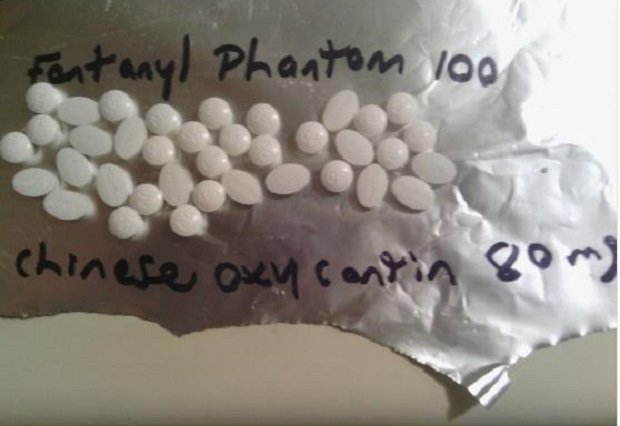Ontario’s police chiefs and several organizations are sounding the alarm on a potential fentanyl overdose crisis in the province.
The Waterloo Region Crime Prevention Council, the Ontario Association of Chiefs of Police, Municipal Drug Strategy Coordinators Network of Ontario, and the Ontario Overdose Prevention and Naloxone Access Working Group yesterday issued an advisory saying that fentanyl-related deaths sweeping across Western provinces and some nearby American states have reached Ontario.
“The bootleg fentanyl and other novel substances add a new level of urgency to Ontario’s chronic opioid crisis,” the organizations warned. “We encourage the Province of Ontario to expedite previous requests to establish dedicated leadership to urgently collaborate with all stakeholders in emergency preparedness planning, and the coordination of interventions that will save lives, reduce injury and improve safety for all Ontarians.”
More than 6,000 people have died of an opioid-related overdose since 2000. Estimates indicate that In 2014, a person died of an opioid-related overdose every 13 hours, according to the advisory released by the groups – that number exceeds the total number of deaths on Ontario’s roadways for the same period.
Fentanyl is a synthetic opioid analgesic formulated back in 1960. It has a rapid onset and a short duration action. It is estimated to have hundreds of time the potency of pharmacy-grade heroin and 80 times the potency of morphine. Some of the brand names it is sold under include: Sublimaze, Actiq, Durogesic, Duragesic, Fentora, Martifen, Haldid, Onsolis, Instanyl, Abstral, Lazanda, and others.
Fentanyl has a wide therapeutic index and is sometimes used as a surgical anesthetic. However, the drugs extreme potency makes it very hard to “accurately measure a dose of pure fentanyl powder without advanced scientific equipment.”
The widespread use of fentanyl as a palliative drug began in the mid-1990s when it was introduced in the form of a patch branded as Duragesic. This was followed by the Actiq lollipop and the Fentora tablets. Fentanyl has been prescribed as a painkiller for people that have undergone surgery such as a hip replacement.
All U.S. states bordering Ontario are reporting a significant spike in fentanyl-detected deaths.
British Columbia has declared a public health overdose emergency as record-setting overdose deaths due primarily to bootleg fentanyl have surged 74 per cent over the same period last year.
Between 2011 and 2015, bootleg fentanyl had driven overdose fatalities up 4,500 per cent in Alberta, according to Joe Couto of the Ontario Association of Chiefs of Police.
“The information campaign and community outreach in Ontario began early this year,” said Couto. “We wanted to get the word out and spread awareness before the problem becomes too big to handle.”
The Office of the Chief Coroner of Ontario reported 674 opioid-related deaths in 2014.
So far, 2016 is shaping up to be a “record-breaking year” as far as overdose alerts and fentanyl seizures are concerned.
“Fentanyl has a really rapid high but it’s a quick one, so users are always looking for the next big high,” said Couto.
Unfortunately, because a lot of the fentanyl in the market is bootlegged, this means it has been manufactured with questionable quality control. There’s no telling how strong a dose could be.
In Ontario, bootleg fentanyl has been detected in heroin and cocaine. The drug has also been found in powder form, and as counterfeit pills made to resemble prescription opioids such as Percocet, Oxycontin 80mg.
Unconfirmed reports suggest the bootleg fentanyl may also be present in crystal methamphetamine and ecstasy (MDMA). Additionally, substances such as U-47700, AH-7921, and W-18 have been detected in Ontario. These substances are often ordered online, shipped from China, consumed or repackaged and trafficked on the streets.
“Most consumers may not be able to detect fentanyl since it “cannot be detected by sight, smell or taste,” the advisory said.
Bootleg fentanyl could have health and safety implications for first responders and hospital staff due to potential exposure via skill contact or accidental inhalation.
People suffering from fentanyl overdose typically experience shortness of breath, clamminess, trouble in moving, numbness, and slow heartbeat.
“Eventually, the heart stops and the person experiencing the overdose dies,” said Couto. “To prevent this, first responders administer naloxone, which reverses the effects of fentanyl.”
More than two naloxone doses (0.4mg/ml) may be required to revive a victim.
You can find more information and other resources on fentanyl from the Municipal Drug Strategy Coordinator’s Network of Ontario Web site.

